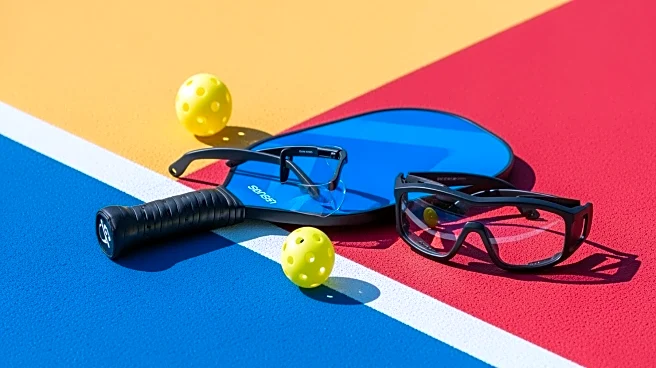What's Happening?
Pickleball, a sport combining elements of tennis, badminton, and ping-pong, has seen a significant rise in popularity, with 19.8 million players in 2024. However, this surge has been accompanied by a notable
increase in eye injuries. A study published in JAMA Ophthalmology reports that pickleball-related eye injuries have more than doubled between 2021 and 2024, with over 400 additional cases annually compared to the previous decade. The study analyzed data from the US Consumer Product Safety Commission, revealing that 43% of injuries were due to direct hits from the ball, 28% from falls, and 12% from paddle hits. Despite the sport's low-impact nature, the small court size and fast-moving ball contribute to the risk of injury. The study emphasizes the importance of wearing protective eyewear, especially for players over 50, who are more susceptible to injuries.
Why It's Important?
The increase in pickleball-related injuries highlights the need for greater awareness and safety measures in the sport. As pickleball continues to grow in popularity, particularly among older adults, the potential for injury could strain healthcare resources and impact the well-being of players. The study's findings could lead to changes in safety recommendations and equipment standards, potentially influencing the sports industry and public health policies. Manufacturers of protective gear may see increased demand, while healthcare providers might need to prepare for a rise in sports-related injuries.
What's Next?
The study's authors hope their findings will encourage players to adopt proper safety measures, such as wearing ASTM F3164 protective eyewear. As awareness of the risks associated with pickleball grows, there may be calls for mandatory safety gear in both casual and professional play. The sports community, including organizations and equipment manufacturers, might respond by promoting safety campaigns and developing new protective products. Additionally, further research could explore other injury types and prevention strategies, potentially leading to broader safety guidelines for racquet sports.













